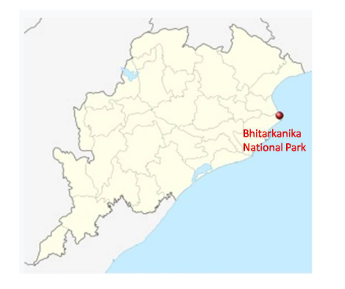Mangroves: - These are a unique type of coastal ecosystem found in tropical and subtropical regions. They are dense forests of salt-tolerant trees and shrubs that thrive in intertidal zones, where land meets the sea.
- These ecosystems are characterized by their ability to withstand harsh conditions, such as saline water, tidal fluctuations, and muddy, oxygen-poor soils.
- Mangroves exhibit Viviparity mode of reproduction, where seeds germinate within the tree before falling to the ground. This is an adaptive mechanism to overcome the challenge of germination in saline water.
- Some mangrove species secrete excess salt through their leaves, while others block the absorption of salt at their roots.
- Mangrove plants have special roots like prop roots and pneumatophores, which help impede water flow and provide support in the challenging tidal environment.
|

